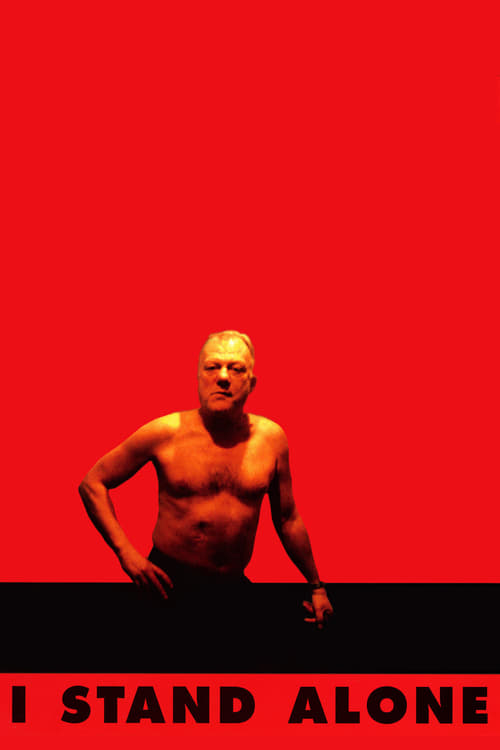
A Clockwork Orange
In a near-future Britain, young Alexander DeLarge and his pals get their kicks beating and raping anyone they please. When not destroying the lives of others, Alex swoons to the music of Beethoven. The state, eager to crack down on juvenile crime, gives an incarcerated Alex the option to undergo an invasive procedure that'll rob him of all personal agency. In a time when conscience is a commodity, can Alex change his tune?
Dialogues from Movie A Clockwork Orange
Quotes from Movie A Clockwork Orange
Sound Tracks from A Clockwork Orange by Wendy Carlos
Singin' in the Rain
Singin' in the Rain by Gene Kelly, Alex's violent assault
March from A Clockwork Orange
March from A Clockwork Orange by Wendy Carlos, Main theme throughout the film
Ode to Joy
Ode to Joy by Ludwig van Beethoven, Used in the reconditioning scenes
William Tell Overture
William Tell Overture by Gioachino Rossini, The dramatic chase scene
Download App
Memorable Scenes from Movie A Clockwork Orange
The Opening Scene in the Korova Milkbar
The film opens with Alex and his gang lounging in the futuristic Korova Milkbar, drinking drug-laced milk. This setting introduces us to Alex's world—raw, chaotic, and unsettling. The unusual visuals and the unsettling soundtrack create an atmosphere that prepares viewers for the dark themes to come. This moment sets the tone for the entire film, showcasing the violent and hedonistic lives of Alex and his friends. Alex's charismatic yet menacing demeanor is captivating, drawing the audience into his twisted psyche.
Context: This scene establishes the film's dystopian setting and introduces the main character, Alex, along with his violent tendencies and love for chaos.
The Theft and Assault
In a brutal sequence, Alex and his gang break into a woman's home, leading to a horrifying act of violence. The camera work captures their aggressive movements and the chaos of the act, accompanied by Beethoven's Ninth Symphony. This juxtaposition of high art and brutal violence highlights Alex's conflicted character and the theme of free will. The aftermath of the scene leaves a heavy weight of guilt and shock as viewers witness the consequences of Alex's actions.
Context: This scene is pivotal because it marks one of the first significant acts of violence that foreshadow the depth of Alex's character and the film’s exploration of morality.
The Interrogation Scene
After being arrested, Alex is subjected to a stern interrogation. His nonchalant attitude clashes with the serious nature of the questions asked by the police. The tension builds as the police director reveals the extent of Alex's crimes. This moment serves as both a revelation of Alex's character and a glimpse into the malfunctioning justice system. The power dynamics shift, showcasing the breakdown of society's moral fabric.
Context: This scene reveals the consequences of Alex's actions and introduces the theme of punishment versus rehabilitation.
Aversion Therapy
In a cruel twist of fate, Alex undergoes aversion therapy to 'cure' his violent tendencies. Strapped to a chair with his eyes held open, he is forced to watch violent images while being injected with drugs that induce nausea. The pivotal moment comes when he reaches a point of intense psychological and physical torment, leading to a complete erasure of his free will. The haunting visuals make this scene resonate, representing the extreme measures society is willing to take to control behavior.
Context: This scene is a critical turning point for Alex, as it showcases the intersection of free will and societal control, emphasizing the film’s central debate on morality and choice.
The Testimonial Scene
After the aversion therapy, Alex is released into society but cannot react to violence without severe physical pain. In a fateful encounter, he runs into his former friends, who now take advantage of his vulnerability. Alex's realization that he can no longer defend himself is a striking emotional moment. The shift from a powerful figure to a victim underscores the film's message about the loss of control over one's life.
Context: This scene highlights the consequences of forced behavior modification and the loss of personal autonomy, deepening the film’s commentary on free will.
Confronting the Writer
In a twist of fate, Alex encounters the writer whose home he invaded earlier in the film. Overwhelmed by the trauma, Alex is unable to defend himself as the writer lashes out verbally and physically. This confrontation is crucial—it forces Alex to face the consequences of his past actions while also revealing his vulnerability post-therapy. The emotional weight of the moment emphasizes the theme of retribution and the cyclical nature of violence.
Context: This scene serves as a powerful reminder of Alex's previous life and the deep psychological scars of his actions, highlighting themes of guilt and consequence.
The Rescue Scene
In a shocking twist, a group of homeless men who had been victims of Alex's violence rescue him from the writer's attack. The dynamic reversal of power is jarring, making the audience question the nature of justice and forgiveness. This moment not only reinforces the film's themes of morality but also highlights the unpredictability of human behavior. The visual chaos of the fight scene underscores the film's exploration of violence and power.
Context: This scene showcases themes of justice, revenge, and the complexity of human relationships following acts of violence.
The Final Encounter with the State
In one of the film's most ironic twists, Alex is taken to the very institution that implemented the aversion therapy when he is on the brink of suicide. The bureaucratic indifference of the doctors presents a chilling tableau of a state that has lost sight of humanity. This moment acts as a critique of societal systems that prioritize control over compassion, highlighting the film’s themes of dehumanization.
Context: This scene reiterates the film’s critique of authority and the ethical implications of societal control mechanisms.
Reclaiming Free Will
In a powerful moment of personal agency, Alex muses about the possibility of decision-making as he lays in a hospital bed. Realizing that he still has the power to choose, even if it leads to his downfall, brings a sense of catharsis. The piano music swells as he fantasizes about his future—a poignant reflection on human nature that brings the film full circle. This moment illustrates that freedom, even with its consequences, is an intrinsic part of humanity.
Context: This scene is crucial as it encapsulates the central theme of free will—a concept that defines human existence and morality.
The Final Monologue
The film culminates with Alex’s contemplative monologue about the nature of violence and civilization. Filled with philosophical reflections, he returns to his life, reconciling his dark past with the hope of a brighter future. This final moment leaves the audience with a sense of uneasy resolution as Alex’s journey suggests the potential for redemption. The dialogue punctuates the film’s enduring themes of free will, rehabilitation, and the cyclical nature of violence.
Context: This scene powerfully brings together the film’s core messages, portraying Alex’s growth while forcing the audience to consider the societal implications of his choices.
Download App









